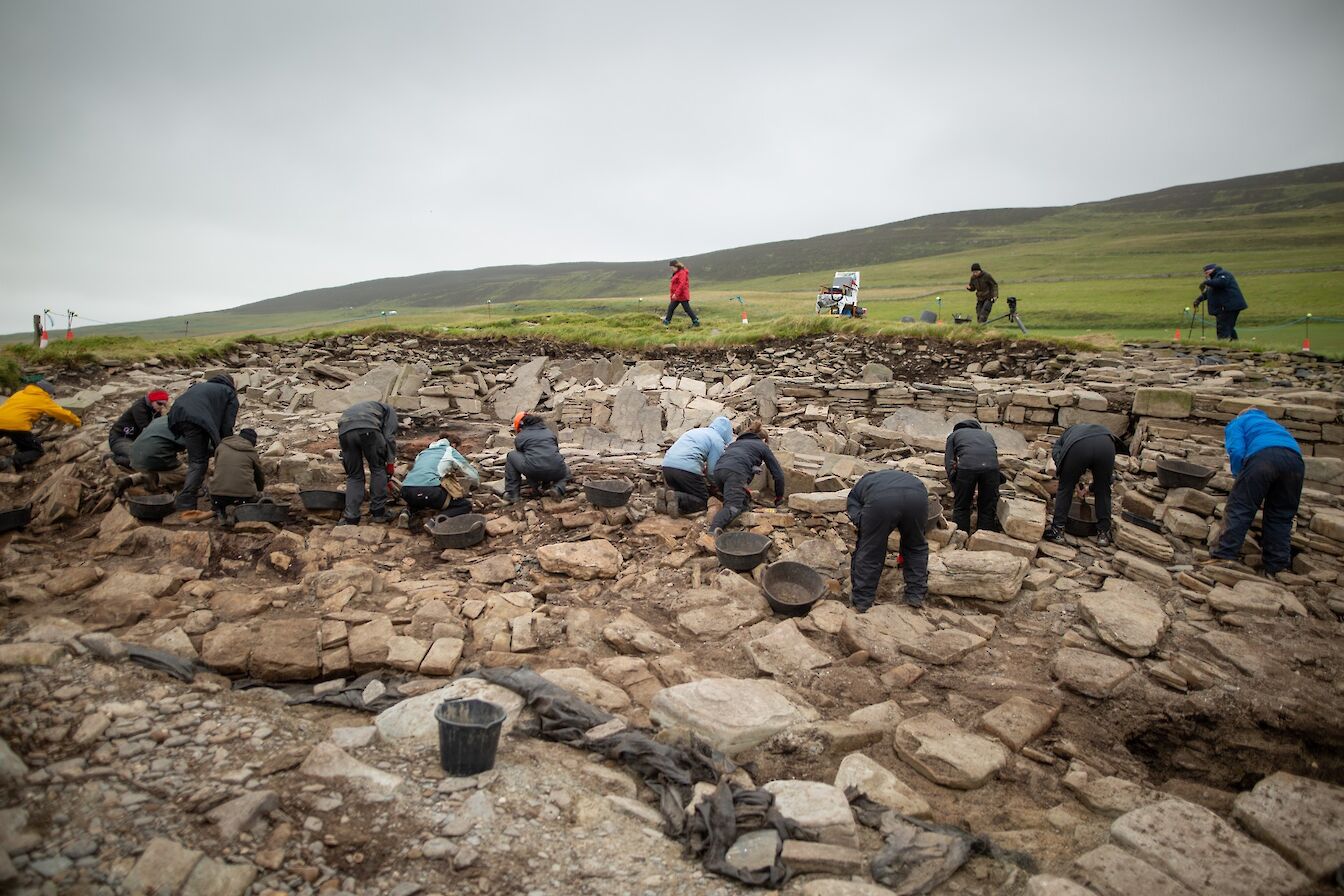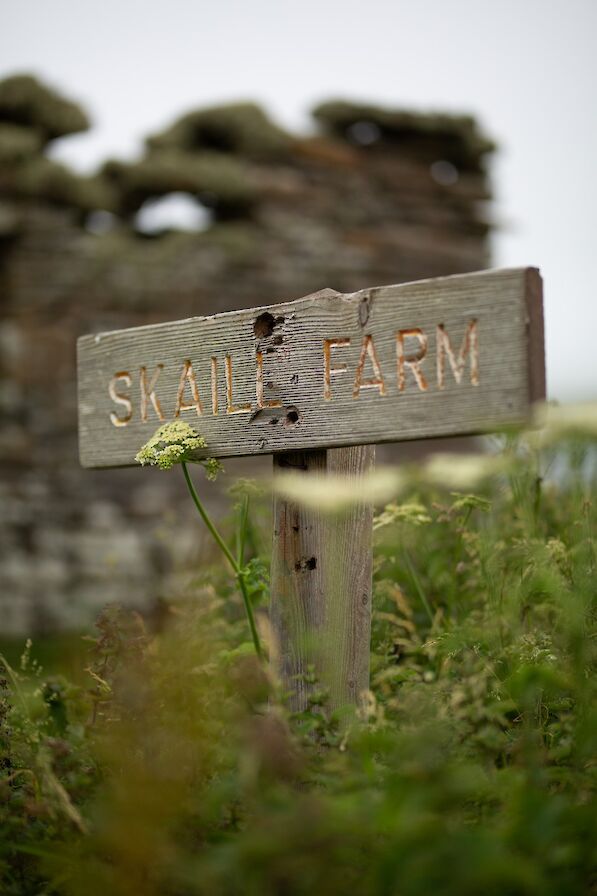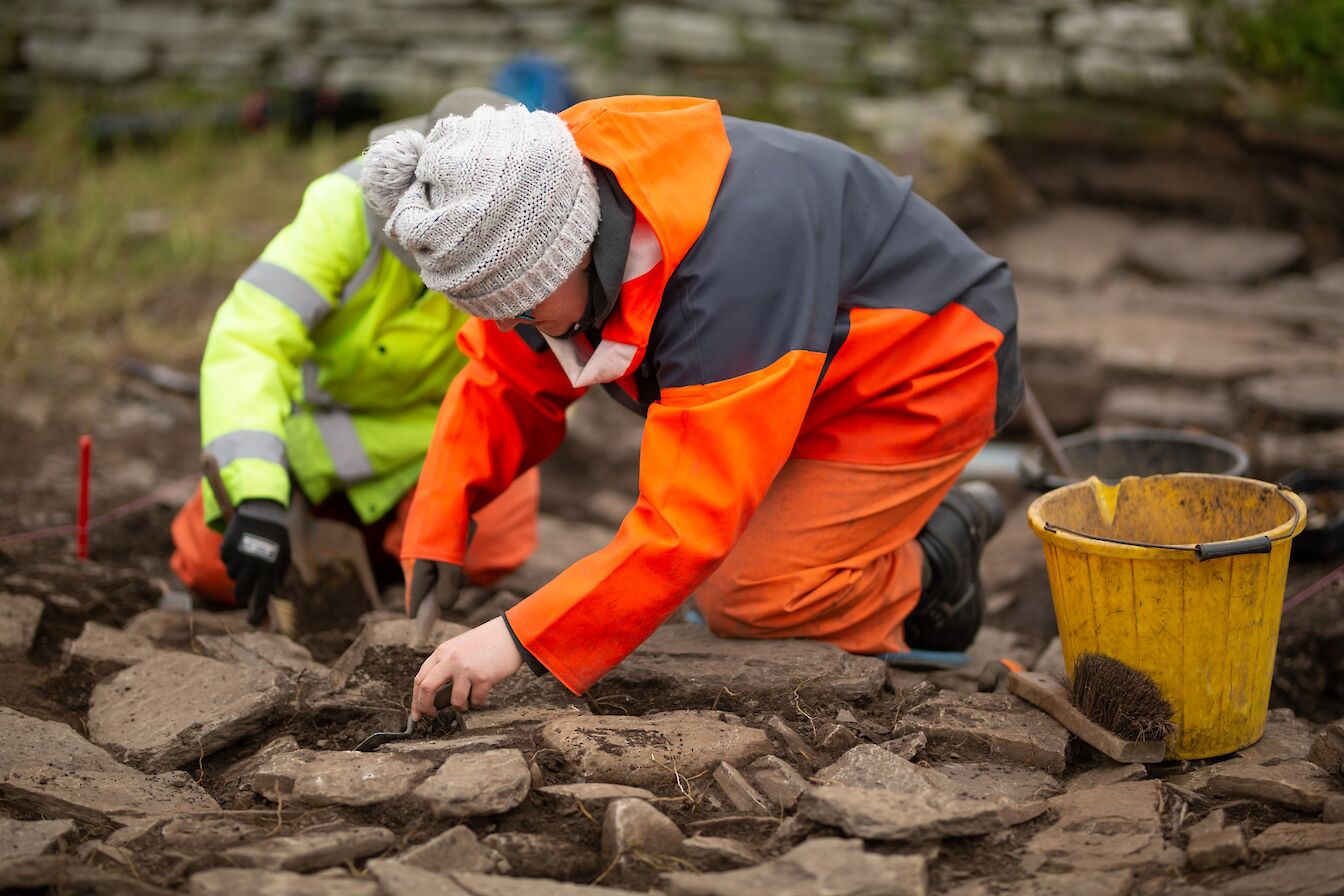Orkney’s archaeology excavation season is in full swing, with dig teams at three sites in the islands already making excellent progress so far this summer – come wind, rain, or shine.
The project at the Ness of Brodgar began in the heart of Orkney’s UNESCO World Heritage Site last week and has already been attracting visitors. But we decided to wait until later in the month to visit the Ness, and instead took a short ferry trip to Rousay to explore two other fascinating excavations.
The island is home to some incredible archaeological attractions, and a visit this summer will give you the chance to see archaeologists in action. The dig at the Knowe of Swandro is situated in a quite spectacular location, perched on the south west coast of Rousay.
The site is almost a cross-section of ancient Orcadian history and includes a 5000-year-old Neolithic chambered tomb, Iron Age structures, Pictish buildings, and a Viking settlement.
Work here is a race against time. Coastal erosion claims more and more of the site each year, and the archaeologists are hoping to explore as much of the complex of buildings before it’s too late and they’re lost forever.
The aim this year is to excavate the huge Iron Age roundhouse to get access to the chambered tomb itself.
Much of the dig takes place on the shore. It’s a special setting, but one that is open to the elements, providing a challenging workplace when the weather is wild. The commitment and work ethic of the archaeologists here is inspiring though; they know this site won’t be around forever, and that seems to spur them on with each passing season.
The dig runs until the 12th of August, although the last week will be spent closing up the site. Normal working hours are Wednesday to Sunday, and free tours can be provided with no need to book. Keep up-to-date on Facebook.
Nearby, a small team of archaeologists have been back at work at Skaill Farm. It’s thought to have been inhabited in one way or another for up to 1000 years, from the Viking period right through to its abandonment in the 19th century.
A more sheltered setting than Swandro, it’s no less fascinating. The name ‘Skaill’ suggests it was a high-status site, which was confirmed in 2019 with the discovering of the remains of a large Norse hall.
The hall probably dates back to the 10th-12th centuries and was found below more recent structures. The hall has one-metre-wide stone walls, and internal features such as stone benches were also uncovered.
Finds here have included pottery, a bone spindle whorl, and a fragment of a Norse bone comb.
The excavation at Skaill is part of the ‘Landscapes of Change – Archaeologies of the Rousay Clearances and Westness Estate’ project. Westness is mentioned in the Orkneyinga saga as the home of powerful chieftain, Sigurd, so it was always thought a Norse settlement could be found at Skaill.
The dig this year will continue to explore the farmstead, hoping to uncover more fascinating stories.
Work at Skaill will come to a close on 22nd July and visitors are more than welcome on weekdays between 9.30am and 4.30pm. There will be an open day on Saturday 16th July. Keep up-to-date on the UHI Archaeology Institute website.
All the digs are weather dependent, so on inclement days there may be no archaeologists on site or tours available. Please check individual websites and social media pages for detailed information, including access, parking and tour group visits.
Follow the UHI Archaeology Institute on Facebook, Twitter and Instagram.















